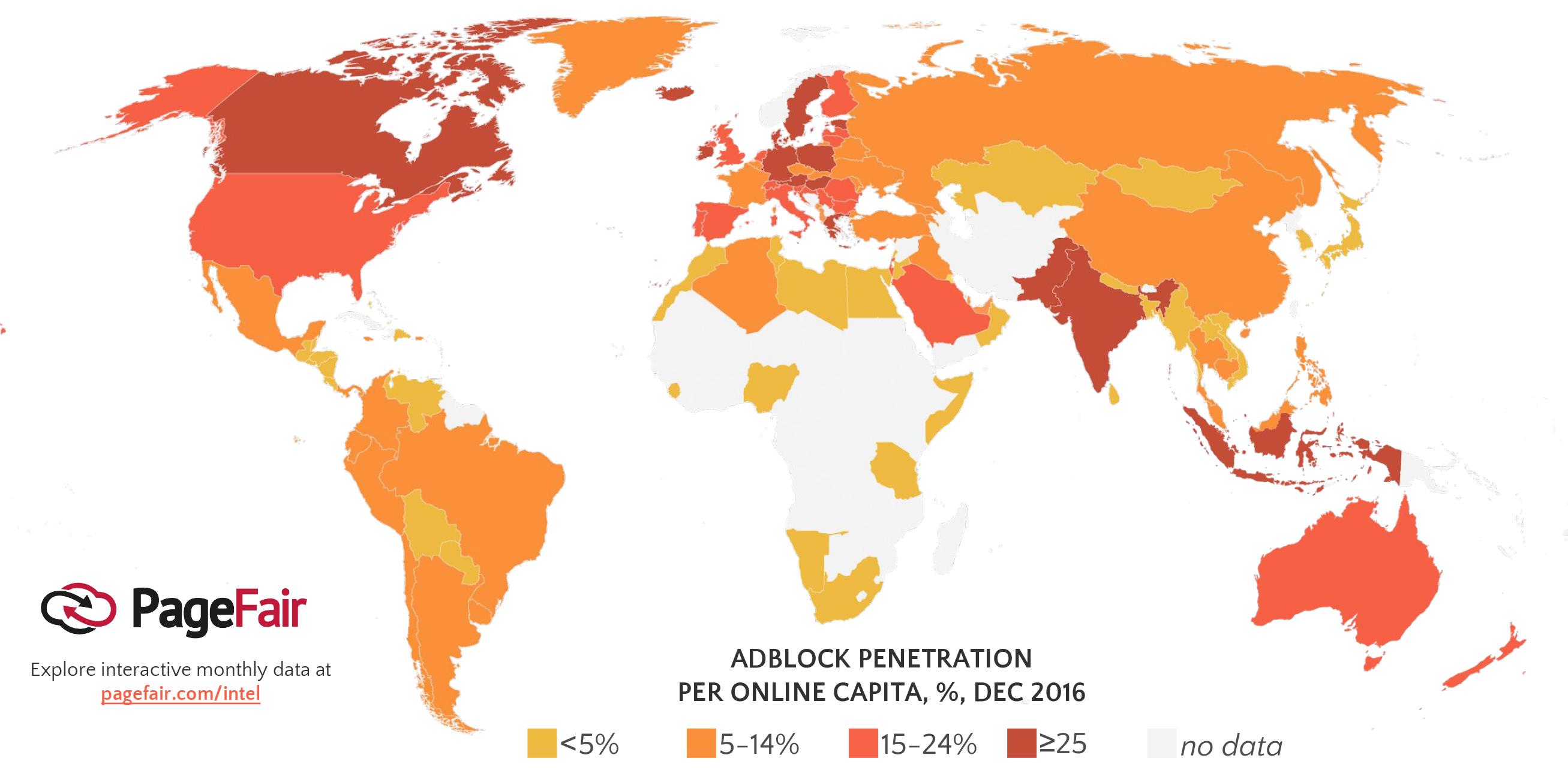New PageFair 2017 Adblock Report: 3 actions for publishers
Good news, according to Ryan, is that PageFair “found a growing willingness to view ads. In our 2014 report 67% of adblock users expressed some willingness to view text or static banner ads. Now 77% of adblock users express some willingness to view ads. Static display formats remain the most preferred among adblock users.”
He advises three actions for publishers to tackle adblockinh:
- Listen to the legitimate grievances that drive people to blockads on their sites.
- Fix these issues, for example by using IAB’s LEAN standard of non-animated display ads.
- The technologies to serve these formats in a manner that adblock can not tamper with have progressed to the point where it can be done at scale.
“This is our preferred solution for most publishers. Proof that this works is that Facebook adopted exactly this approach, and then reported in its Q3 earnings call that doing so increased its Q3 desktop ad revenue by 9% in just half a quarter,” he says.
Here are more findings from the report released earlier today:
Adblock software is at a tipping point between desktop and mobile. Mobile adblock usage in Asia is growing explosively, and set to spread to North America and Europe.
The proliferation of mobile adblock usage in Asia-Pacific markets is powered by a strong consumer value proposition, and accelerated by distribution partnerships with major telecommunication companies and divide makers. No obstacles exist to prevent equally rapid expansion of similar mobile adblocking on mobile devices in North America and Europe.
According to PageFair:
- Mobile adblock usage surged in Asia-Pacific by 40 per cent in 2016
- Adblock usage on desktop and laptop computers continue to grow despite user migration towards the mobile web (by another 34 million in 2016, according to Ryan)
- In December 2016, there were over 600 million devices running adblock software globally, 62 per cent of which were on mobile
- Large emerging markets are the current driving force behind rapid growth in mobile adblock usage
Adblock usage per online capita:

A PageFair survey of 4,000+ Internet users in the US found:
- Specific interruptive ad formats and security concerns are the leading motivations in adblock usage
- Adblock users in the US are 1.5x as likely to have a bachelor’s degree than the average American adult, increasing to 3x as likely among 18-24 year olds
- The vast majority of users state that they abandon websites that require them to disable their adblock software
US adblocker demographics:

According to PageFair, adblock usage is driven by specific problems with the delivery of online advertising and is not a rejection of digital advertising itself. Findings include:
- Interruptive ad formats and virus/malware concerns were the leading reasons given
- 38 per cent more women than men indicated concerns about viruses and malware as their motivation
- 14 per cent more men than women stated interruption was their top concern
- More than 70 per cent of users chose more than one reason as “most important”
- Outside of security and interruption, user motivation did not vary significantly by demographic segment
- While privacy was a top concern for early adopters of adblock software, it is less so from a mainstream audience
On “adblock walls” (barring users on sites until they disable adblockers), the report states “walls are ineffective at motivating most adblock users to disable their adblock software, even temporarily. Unless the website in question has valued content that cannot be obtained elsewhere, and adblock wall is likely to be ineffective at combatting adblock usage at any significant rate,” Key findings in the report:
- 90 per cent of adblock users surveyed have encountered an adblock wall
- 74 per cent of these users say that they leave websites when they encounter such an adblock wall
- When faced with an adblock wall, older internet users and men are more likely to leave than perform the steps required to disable their adblocker
Percentage of users leaving a site when encountering an adblock wall:

According to PageFair, interruptive ad formats are the primary cause of user frustration, while non-interruptive formats, such as static banner ads, are broadly accepted.
You can download the full report from the PageFair site, here.
More like this
Four big ideas emerge from PageFair global stakeholder roundtable







